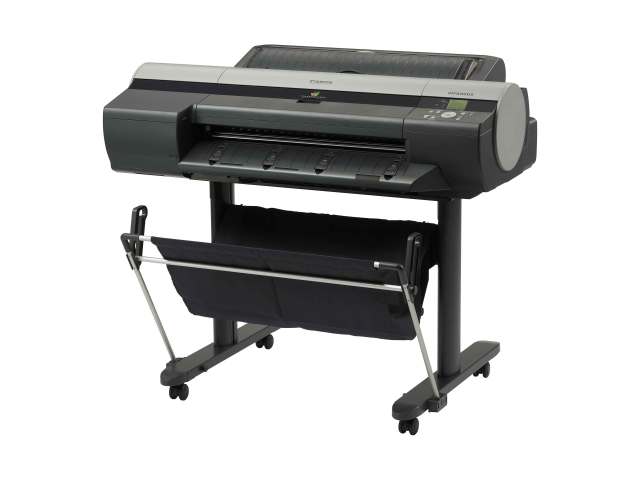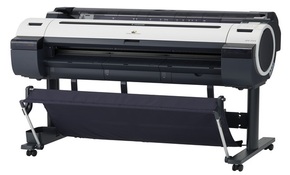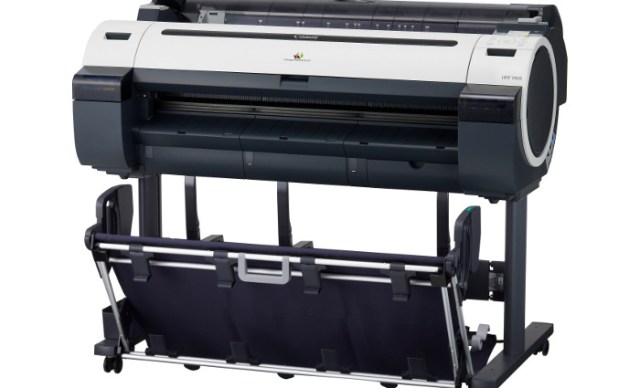In the past four years, Canon has introduced more than 20 ImagePrograf large-format printers to the market and with each incarnation the company claims to have “raised the bar” on image quality. The company’s claims were no less hyperbolic in April this year when Canon unveiled its three latest large-format devices – the 609mm ImagePrograf iPF6350 and iPF6300 and the 1,117mm iPF8300. The new range launched with the marketing promise that they took “quality to the next level”.
According to Canon, the new models achieve this by increasing the colour gamut by up to 20% on previous models such as the iPF5100 and the iPF6100, enabling more than 90% coverage of Pantone colours and creating prints that have “an enhanced colour range and improved durability,” says Troy Neighbour, product manager for large-format printers at Canon Australia.
The flagship model in the new range is the iPF8300, which replaces the iPF8100. Targeted at high-end photography, proofing and the graphic arts markets, the key feature of the machine is the new 12-colour LUCIA EX pigment ink set, which the manufacturer offers with all of its new large-format machines. Canon claims the inks improve scratch resistance, reduce bronzing and metamerism and produce expressive, crisp blacks, smooth colour gradations and fine details even in the dark shadow areas of images. It achieves this through the addition of a slipping material that lowers the coefficient of friction in conjunction with a polymer added to strengthen the bond in the ink layer.
Super-fine drops
The iPF8300 uses two one-inch print heads, each featuring 30,720 nozzles, or 2,560 nozzles per colour, outputting a “consistent super fine four picoliter droplet at a full 2,400×1,200dpi resolution to reproduce details with extraordinary accuracy and clarity”, claims Neighbour. The new heads help to reduce mist or satellite spray that sometimes surrounds the core printed dots.
There are two output options: high-precision printing mode for photographs, which offers enhanced glossiness, sharper blacks and deeper dark tones; and high-precision printing mode for text and fine lines, which aims to minimise excessive thickness in text and fine lines while reducing the misrepresentation of colours produced.
When taking advantage of the photographic output option, the machine has a colour calibration function that uses an internal high-performance multi-sensor to precisely detect, adjust and compensate for variations in density among print heads. This helps in the creation of stable colour reproduction and accurate colour matching, explains Neighbour, who adds that the colour calibration function is easily accessible through the printer operation panel with the entire calibration process easily completed in ten minutes.
In addition to the broad colour gamut and greater calibration on offer, the new machine also features an enhanced printer carriage, which provides increased precision and rigidity to deliver improved ink ejection accuracy, according to Neighbour.
“The enhanced frame structure realises crisp black text as well as sharp white knockout text, higher line and text precision, enhanced colour representation and uniformity and superior gloss homogeneity for improved resolution and graphical consistency in proof printing,” he adds.
The iPF8300 utilises a newly developed image processing technology that converts RGB data into ink colour during printing, as well as the capability of fine-tuning colours and retouching images in Adobe Photoshop before printing to produce a level of accuracy and quality that is essential for professional photographers and creatives, explains Neighbour.
The new ImagePrograf models feature a new media configuration tool, which allows the adjustment, registration and distribution of various parameters of third-party media.
“This tool makes possible safe and effortless printing and proofing when using non-Canon brand media to allow users to maintain their preferred workflows and settings,” says Neighbour.
So for example, media weight or thickness, printhead height and vacuum strength can all be set through a simple wizard-based programme. Users can also limit the amount of ink used by printing out a standard test chart with varying levels of ink laid down – the user then chooses the one that is most appropriate for the media type. This function also has advantages for paper manufacturers and RIP partners as the saved file can be made available for download from these companies along with ICC profiles.
The iPF8300 supports RIPs from vendors such as GMG, CGS, EFI and ONYX, which “further supports a range of print applications such as proofs, designs and commercial photos, allowing designers, photographers and other professional users to print without changing preferred workflows,” he says.
Thanks to the machine’s built-in 80GB hard drive, the iPF8300 is ideal for environments in which multiples users are printing to the unit. The hard disk drive also allows users to save job data even during print jobs to quickly free up the PC providing the data. It also supports job recoveries in the event of an error by eradicating the need to resend print data from the source PC.
Watching costs
Further support is provided by the iPF8300’s accounting manager module, which enables users to keep tabs on costs and allocate consumable expenses to print projects more easily. You can track jobs by user to calculate ink and media costs and the number of pages printed. This information can then be exported to Excel for billing purposes if required.
The printer ships with Canon’s Printer Driver for Windows and Macintosh, Print Plug-in for Photoshop and Digital Photo Professional, Printer Driver Extra Kit, Print Plug-in for Microsoft Office and Digital Photo Front-Access. PosterArtist, an easy-to-use template-based poster creation software developed by Canon, which provides a wide range of pre-designed templates and high-resolution royalty-free images, is also available as an optional extra.
All-in-all, the new iPF8300 sounds like an attractive proposition but how will it sell? While Neighbour refuses to be drawn on specific sales targets for the machine, or the exact number of installations secured in Australia to date, he’s happy to divulge that the machine is performing well. “Our sales results for the iPF8300 have exceeded our expectations since launching in quarter two and we are expecting strong growth in 2011.”
Neighbour adds that the ImagePrograf range already has a strong presence in the large-format market in Australia and its popularity is growing steadily each year. And even though the machine currently sits in Canon’s consumer imaging division, whereas in some other regions it sits in the graphic arts division, Neighbour is quick to point out that it is available to all Canon sales channels so there is no impact on commercial printers as they are still serviced by Canon Business Imaging.
Regardless of which division is selling it, he’s confident the new machine will play an important role in Canon’s growth.
“The iPF8300 has had a positive impact for Canon and we have seen increased interest from commercial printers and the print-for-pay market,” says Neighbour. “The iPF8300 has also helped revive interest in professional photographers moving their printing requirements in-house.”
While some rival manufacturers will inevitably refute Canon’s claims that the iPF8300 has raised the bar on quality in the large-format print sector, its growing appeal suggests it has a strong future.
Specifications
Media width 44in
Max resolution 2,400×1,200dpi
Max speed Draft mode: 1:08/24m2/h(plain paper)
High mode: 4:01/6.4m2/h(glossy photo 170)
Imaging method Thermal inkjet
Ink type Canon LUCIA EX pigment inks
Number of colours 12
Comment below to have your say on this story.
If you have a news story or tip-off, get in touch at editorial@sprinter.com.au.
Sign up to the Sprinter newsletter



